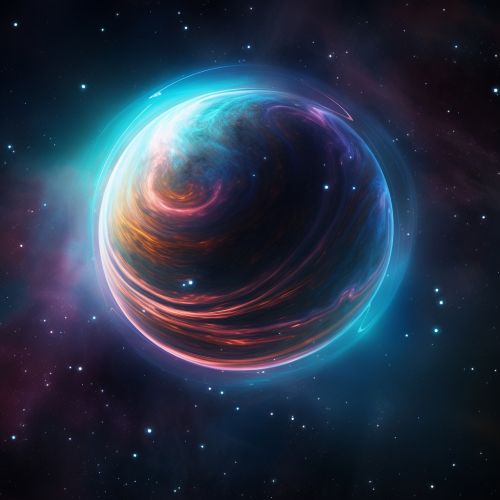The Dynamics of Planetary Magnetospheres and Aurora Formation
Introduction
The study of planetary science has led to the discovery of the existence of magnetospheres around various celestial bodies. These magnetospheres are regions around a planet where the behavior of the plasma is dominated by the planet's magnetic field rather than by the solar wind. The dynamics of these magnetospheres and the subsequent formation of auroras is a fascinating field of study within planetary science.


Planetary Magnetospheres
Formation and Structure
Planetary magnetospheres are formed when a planet's internal magnetic field interacts with the solar wind, a stream of charged particles emitted by the sun. The solar wind carries with it the Sun's magnetic field, known as the Interplanetary Magnetic Field (IMF). When the IMF comes into contact with a planet's magnetic field, it compresses the field on the side facing the sun and extends it into a long tail on the side away from the sun, forming a magnetosphere.
The structure of a magnetosphere is primarily determined by the strength of the planet's magnetic field and the pressure of the solar wind. The boundary of the magnetosphere, known as the magnetopause, is where the pressure of the planet's magnetic field balances the pressure of the solar wind. Inside the magnetopause is the magnetosheath, a region of turbulent plasma where the solar wind slows and heats up as it encounters the planet's magnetic field.
Dynamics of Planetary Magnetospheres
The dynamics of planetary magnetospheres are influenced by several factors, including the strength and orientation of the planet's magnetic field, the speed and density of the solar wind, and the orientation of the IMF. Changes in any of these factors can cause the magnetosphere to change shape and size.
One of the key aspects of magnetospheric dynamics is the process of magnetic reconnection. This occurs when the magnetic field lines in the solar wind and the planet's magnetic field connect, allowing energy from the solar wind to enter the magnetosphere. This energy can then be stored in the magnetosphere's tail, leading to a buildup of pressure that can eventually trigger a release of energy known as a magnetospheric substorm.
Aurora Formation
Mechanism of Aurora Formation
Auroras, also known as polar lights, are a spectacular visual manifestation of the dynamics of planetary magnetospheres. They are formed when charged particles from the solar wind enter a planet's magnetosphere and are guided by the magnetic field lines to the planet's polar regions. Here, they collide with atoms and molecules in the atmosphere, causing them to become excited and emit light of various colors.
The color of an aurora depends on the type of atom or molecule that the solar wind particles collide with and the altitude at which the collision occurs. For example, green auroras are typically caused by collisions with oxygen atoms at altitudes of about 100 to 300 kilometers, while red auroras are caused by collisions with oxygen atoms at higher altitudes, and blue or purple auroras are caused by collisions with nitrogen molecules.
Factors Influencing Aurora Formation
The formation and intensity of auroras are influenced by several factors, including the strength and orientation of the planet's magnetic field, the speed and density of the solar wind, and the orientation of the IMF. For example, a southward orientation of the IMF can enhance the connection between the solar wind and the planet's magnetic field, leading to more intense auroras.
The location and time of aurora formation can also vary. Auroras are typically seen in the polar regions, where the planet's magnetic field lines converge. However, during periods of high solar activity, they can be seen at lower latitudes. Auroras are also more likely to occur during the local night, when the side of the planet facing away from the sun is exposed to the solar wind.
Conclusion
The dynamics of planetary magnetospheres and the formation of auroras are complex processes that are influenced by a variety of factors. Understanding these processes not only provides insights into the behavior of our own planet's magnetosphere and the beautiful auroras it produces, but also has implications for the study of other planets and the possibility of life beyond Earth.
